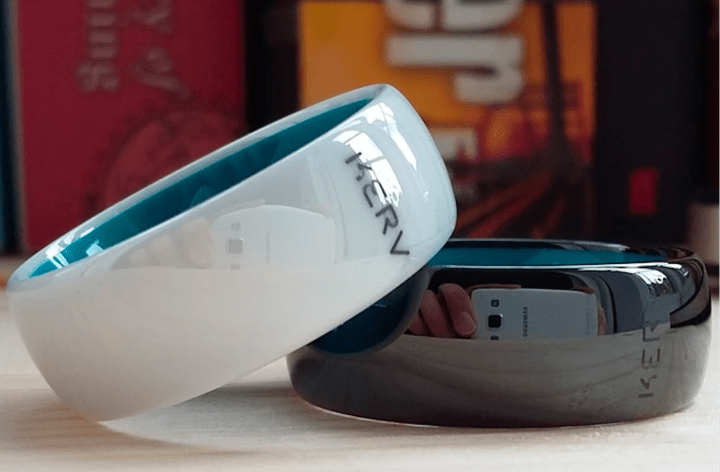
TechRadar reports that the launch is a U.K.-only affair for the moment, with the United States and Australia to follow if everything goes according to plan. The ring retails for 100 pounds — the equivalent of a little more than $120 U.S. — and is available in 14 different color combinations.
The brainchild of Philip Campbell, London-based Kerv touts itself as the “world’s first contactless payment ring.” Following recent M/Chip certification from Mastercard, the device is compatible with millions of terminals worldwide that support the credit card company’s proprietary technology, and is issued alongside a Mastercard prepaid account into which funds can be deposited and withdrawn.
Kerv works by way of its Near Field Communication (NFC) payment chip, which is embedded in the ring and activated “when brought close to a contactless reader — at retailers, in taxis, or on public transport.” It’s the same way you would pay with services like Apple Pay and Android Pay.
This means that in the same way that you can now tap your credit card in the U.K., you can just flash your ring, and the encrypted data stored in the NFC chip will authorize the transaction. Assuming you have adequate funds in your prepaid Kerv account, you can easily make a payment and track your balance. And best of all, the complete reliance on
Your Kerv account, which can be set up online, works very much like a debit account. The best part (or worst, depending on your spending habits) is that you’ll only be able to make payments via Kerv if you have enough money in your account. This prevents overdraft fees and burgeoning debts, and may also help in keeping you honest when it comes to your shopping sprees.
And as for other safety and security issues, Campbell assures users that Kerv can “only make a payment within a very small radius of a contactless reader, to avoid any unintended transfer of data or funds.” Calling the ring as secure as chip and PIN systems, the Kerv team also notes that “because Kerv never leaves your finger, the risk of cloning or theft is significantly reduced.”
But it’s not just payments. To date, Kerv is also compatible with “NFC-controlled locks and security systems, information sharing with NFC-enabled smartphones, and one-touch access to London’s public transport system.” Back in 2015, Campbell told Bloomberg that his team was interested in expanding to a “digital wallet with a much smoother user experience and then connect that to multiple hardware devices.” This launch represents an important first step toward that goal.
Article originally published in October 2015. Updated on 03-08-2017 by Adam Ismail: Added announcement that device has gone on sale in the U.K., as well as Mastercard certification news.
Editors' Recommendations
- This smart ring has a feature you would never expect
- One feature will make the Apple smart ring worth waiting for
- I’ve worn a smart ring for years. You need to know these things before buying one
- If this is what an Apple smart ring could look like, I need it right now
- This smart ring maker has some wild product plans for 2024


